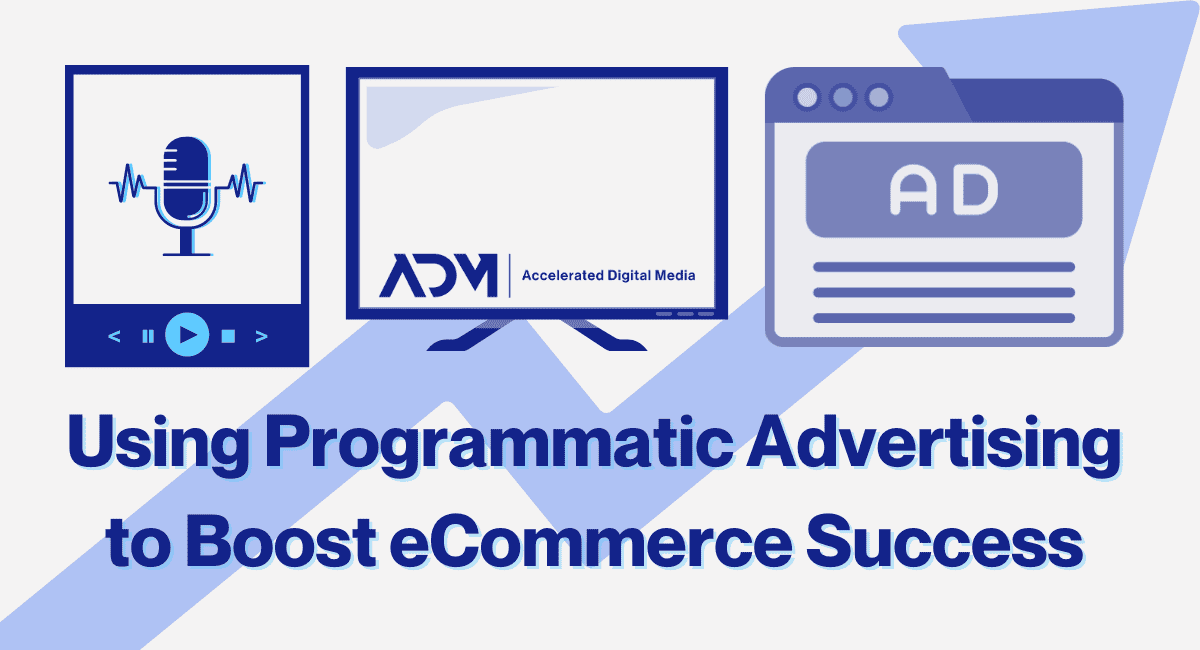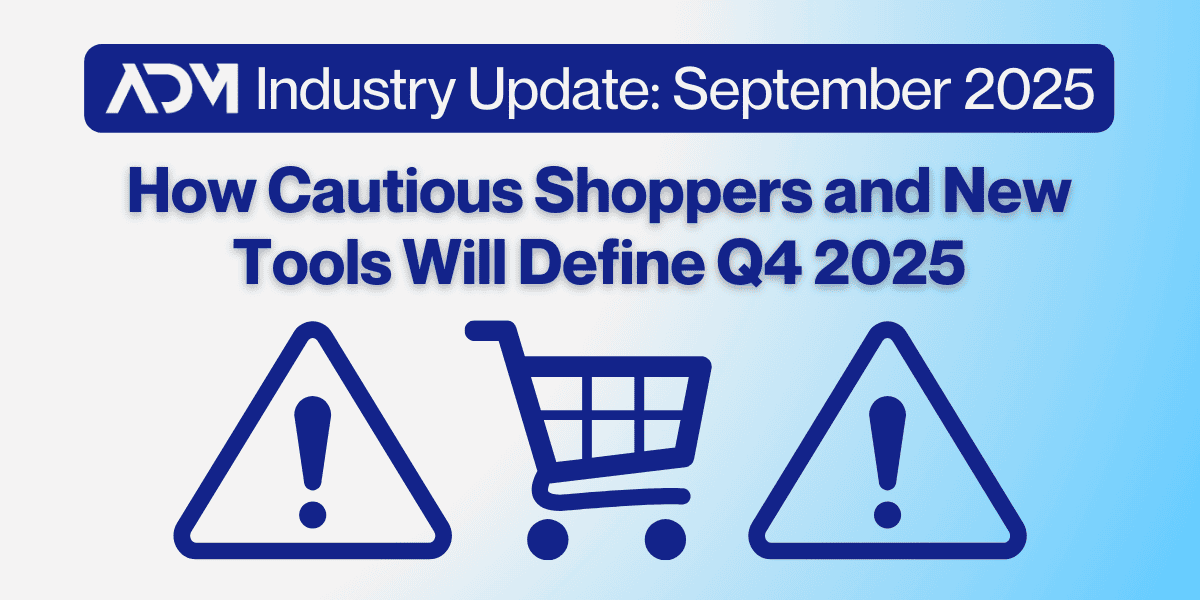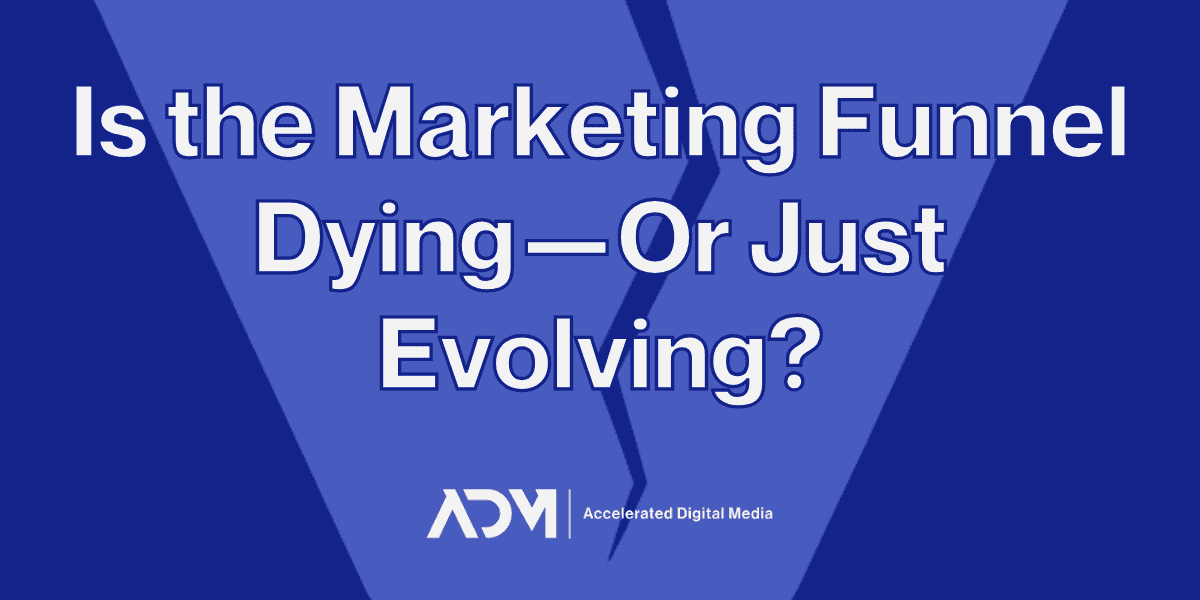Programmatic advertising is typically associated with top-of-funnel initiatives. And it’s true: most programmatic channels—from prospecting display to podcasts to connected TV—are all great at driving awareness and brand recognition. The awareness generated from these efforts then help propel forward lower-funnel efforts such as paid search and paid social.
However, there are two common misconceptions.
First, many eCommerce advertisers fail to realize that, despite these efforts being so valuable for top-of-funnel awareness, advertisers can monitor (and thus influence) their down-funnel performance. Take the example of a Connected TV campaign. Not only can we monitor reach and impressions to ensure we are spreading brand awareness, but we can also monitor traffic generated to the site from users who saw our ad (middle of funnel) and purchases that resulted from those users (bottom of funnel). Having this visibility allows a level of optimization that can be customized towards an advertiser’s end goals.
Second, there are absolutely some programmatic options that are designed for lower-funnel success. One of the core benefits of programmatic is in its targeting options, and that includes retargeting. Want to utilize an audience of existing customers, non-converting site visitors, or lapsed buyers who have not repurchased in the last year; and target them specifically with display ads, TV ads, or streaming audio ads? A smart programmatic ads agency can make that happen.
The Benefits of Programmatic Advertising for eCommerce Brands
Programmatic advertising offers a number of unique benefits, including:
- Transparency: Managing programmatic advertising through a single interface provides real-time insights on ad performance, visibility, and user demographics. This transparency equips advertisers with the tools to measure, learn, and quickly adapt to changes.
- Scalability: A wide range of network and audience options offer significant scaling potential for advertisers of all sizes. They can easily adjust budgets in real time when needed.
- Efficient Ad Buying Process: The ability to buy media across thousands of networks on a single platform not only offers broad audience reach but also allows marketers to focus on optimizations and key wins.
- Cost Effectiveness: Programmatic advertising employs optimized bidding processes to ensure advertisers pay lower rates for the best-performing users. When buying programmatically, advertisers participate in real-time auctions, often resulting in lower CPMs than traditional methods.
- Targeting: Marketers excel with plenty of options, and programmatic targeting is a significant advantage. First and third-party audience lists, geolocation, and device type are simple ways to refine targeting. Additionally, display ads can be targeted through contextual advertising (appearing on relevant websites) or behavioral targeting (reaching users regardless of their location).
Connected TV Advertising for eCommerce
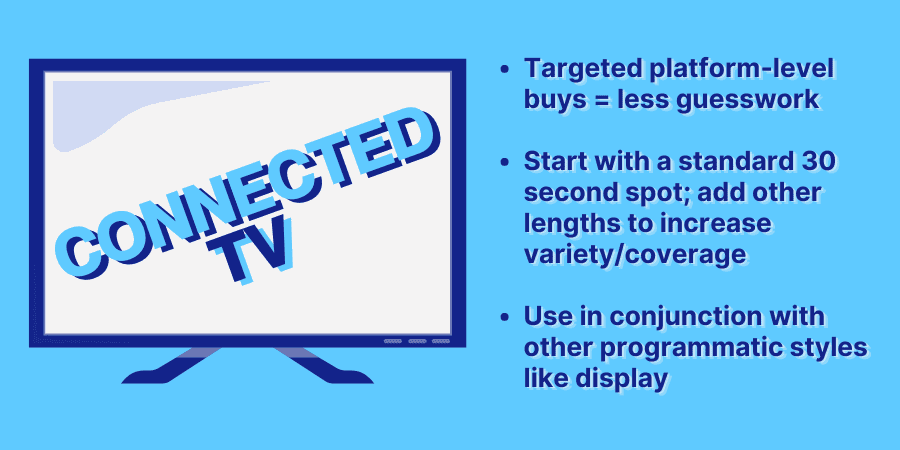
We recommend starting a Connected TV campaign by targeting a well-defined audience and purchasing placements on the streaming platform level (Hulu, Peacock, HBO, etc). This eliminates the guesswork that comes along with trying to purchase media at the station or program level. For example, a men’s clothing company doesn’t need to guess that their users are watching ESPN on Friday afternoons. Instead, clearly defining who the intended audience is, and then purchasing ads across Hulu will ensure the message reaches that audience no matter what they are watching.
From a creative standpoint, we recommend starting with at least one :30 spot. Having additional lengths, like :15 or 1:00, can also give a bit more flexibility to take advantage of inventory availability.
We also typically recommend utilizing Connected TV in conjunction with other programmatic efforts, like retargeting display. With programmatic, it is possible for an advertiser to build a retargeting audience based on users who viewed their TV commercial.
This allows that advertiser to then utilize retargeting display, targeting this audience via behavioral targeting, to show them display ads that contain messaging and visuals that are aligned with the TV spot. This joint effort encourages easy recall and reminders for a user who saw a TV spot and needs a reminder to take action—like an online purchase—adding a bottom of funnel layer to what began as a top of funnel strategy.
Podcast Advertising for eCommerce Brands
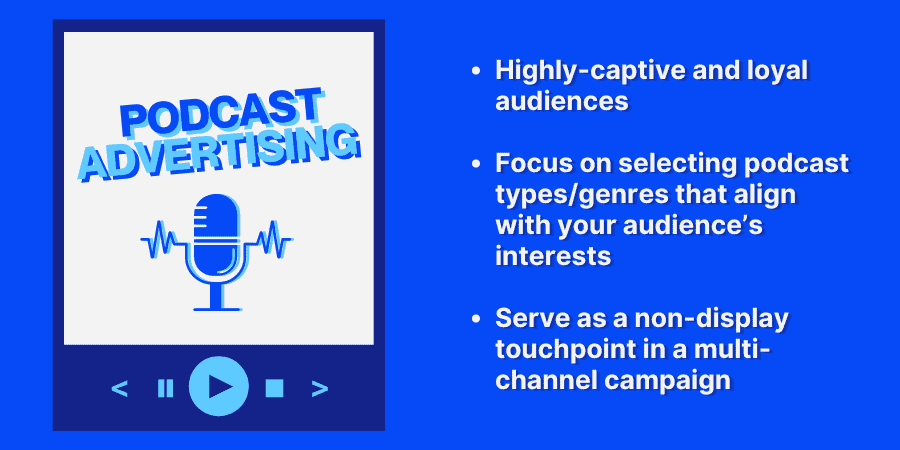
Podcast advertising especially has the benefit of a highly-captive and loyal audience base. Given the audio nature of podcast advertising, the medium allows ecommerce brands to reach consumers when they are on the go, and highly engaged with a podcast episode, as they choose to listen to specific shows that interest them. This level of engagement can lead to higher ad recall and effectiveness.
When recommending podcast advertising for eCommerce brands, we suggest focusing on a highly targeted approach by selecting show genres that align with your brand’s values and resonate with your target audience. Instead of broadly targeting an entire podcast network, zeroing in on the right content while layering on demographic targeting ensures that your ads are delivered in a context that feels relevant and authentic.
For instance, if you’re promoting a sustainable fashion brand, you don’t need to limit your ads to eco-friendly podcasts alone; instead, you can target shows where listeners are likely to value sustainability, such as those about lifestyle, mindfulness, or ethical consumerism.
To maximize the impact of your podcast ads, it’s beneficial to integrate them with the broader marketing strategy. For example, your podcast ads can serve as the non-display touchpoint in a multi-channel campaign, which you can follow up with further visual efforts via social media or paid search efforts. This approach reinforces your message with consistent visuals and calls to action, creating a seamless experience that guides listeners from awareness to purchase.
How Programmatic Display Advertising Fits In
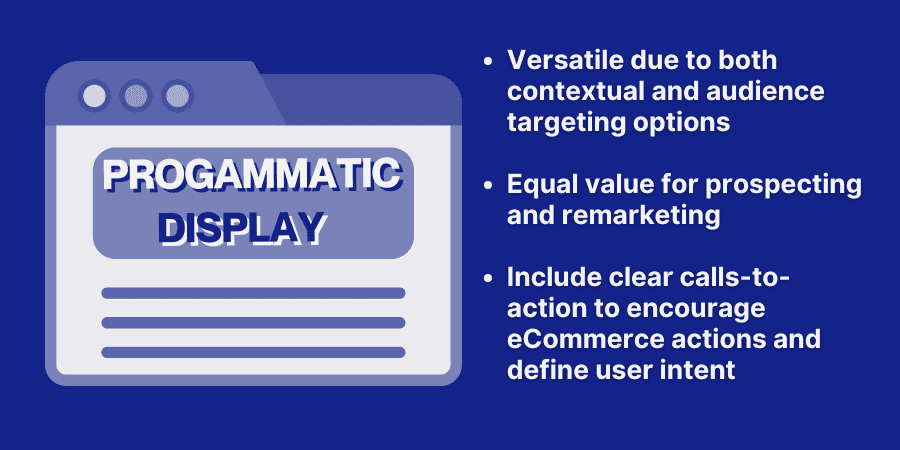
There are many ways to approach programmatic display. Let’s start with targeting and defining your audience.
Contextual targeting allows you to place banner ads on a site or article that speaks directly to a topic that relates to your products. Let’s say you are an eCommerce brand who in the running and fitness space. Contextual advertising will allow you to place banner ads on articles with headlines like “How to Train for a Marathon” and “Tips for Increasing Your Running Endurance” so you know those reading the article will index with what you offer.
Audience targeting allows you to reach a defined audience regardless of where they are browsing. In the same example, let’s say you, as a fitness product advertiser, want to reach users who have expressed some level of interest in similar products. You can do this by targeting a third-party list of people who have expressed interest in similar activewear brands or lifestyle interests.
In addition to those prospecting tactics, remarketing should continue to play a role in a programmatic display campaign. Targeting non-converting site visitors, for example, is a great way to encourage people who showed interest but had not yet taken the desired action.
From a creative standpoint, a solid display campaign should start with, at minimum, coverage across the most prevalent banner sizes (728×90, 320×50, 300×600, 300×250). Having multiple sizes gives the campaign more options to take advantage of real estate across the web. Visuals and headlines should be attention-grabbing while remaining on-brand so that when the user clicks through to your site, there is no question they are in the right place.
To encourage eCommerce conversions, all banner ads should include a clear and concise call to action (“Learn More”, “Shop Now”, “Try Today” are all great examples of this). Make it clear what action users intend to take when they click.
Aligning Programmatic Ads with Other Digital Marketing Strategies
It helps to think of the full funnel when identifying the impact a programmatic campaign can have. Connected TV, Podcast Ads, and Prospecting Display campaigns can not only drive more site visits that help replenish remarketing audiences in Paid Search and Paid Social, but they can also have a positive impact on impressions coming from other channels. Retargeting display can help spread the brand message to users who have engaged with other channels or encourage further action when placed contextually.
Think about the last time you saw a TV commercial that piqued your interest. It’s possible that you went directly to the website that was mentioned in the ad, but it’s also extremely likely that the first thing you did was to Google the brand name. This common action leads to an increase in both Brand and Organic search impressions (and often clicks), boosts you can verifiably see in Google Ads and Analytics.
From a reporting standpoint, it is important to understand the full impact of programmatic advertising. At ADM, we measure the impact of all of our programmatic campaigns not just by looking at the directly attributed performance, but also by looking at the lifts seen across these other channels in the times and locations where programmatic was running.
Understanding Programmatic’s Value Throughout the Funnel
Even with all of the measurement tools and direct insights at their disposal, many advertisers still approach programmatic as solely an awareness play: They’ll expect high impressions but lesser down-funnel performance and never dive any deeper than that. But as we’ve demonstrated above, its value can verifiably be traced and translated to an end purchase.
The best approach is to identify what other channels may interact with and benefit from your programmatic advertising so you can plan to measure its full impact. If you’re looking for a performance marketing agency that knows how to follow the signals from awareness to conversions, considering reaching out to the ADM team for a conversation or audit.


